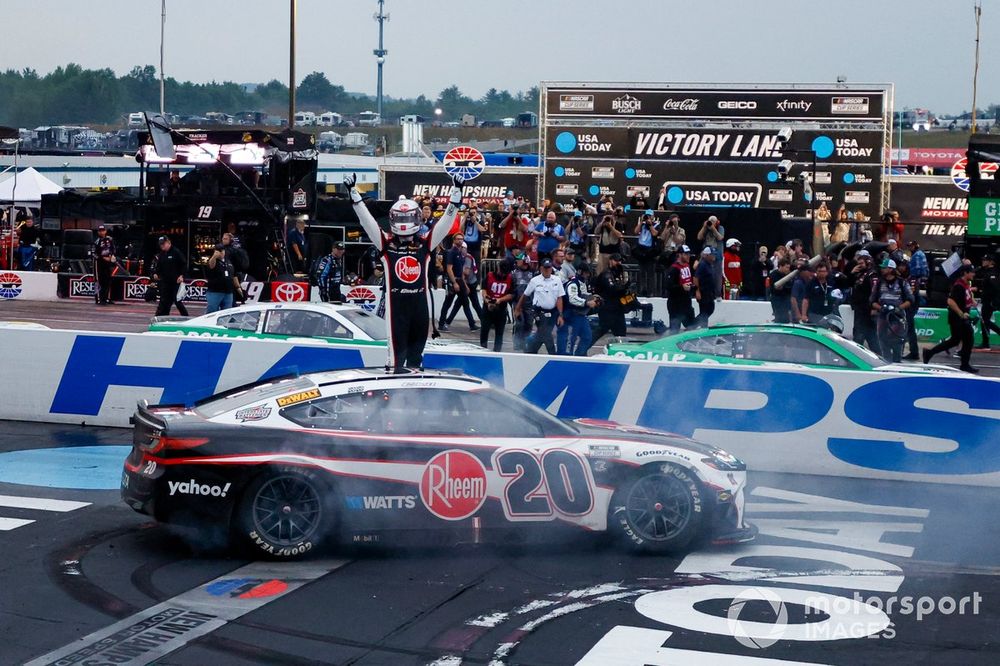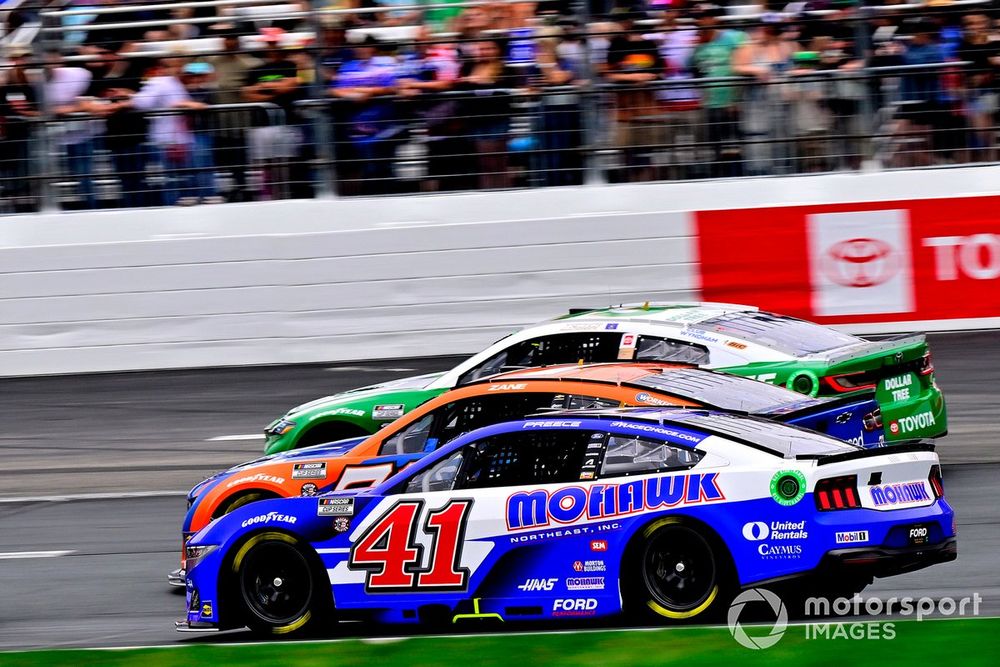At Richmond earlier this season, the Cup Series had its first experience using wet tires on shorter ovals as teams started the race with them and ran the first 30 laps until the track dried.
It was just a taste, but most observers – and many drivers – found racing on the wet-tread tires better and more entertaining than on the slicks used for the rest of the race.
On Sunday at New Hampshire Motor Speedway, we saw an even bigger opportunity and secured an even bigger payoff.
The race received a red flag after 219 laps when heavy rain and thunderstorms moved into the track area. Tyler Reddick looked set to take victory thanks to a bold decision not to pit during the stage break as his 23XI Racing team hoped rain would arrive before the end of the race.
They were right, but they probably weren’t betting on NASCAR’s decision to wait out a delay of nearly two hours and 15 minutes and then run the rest of the race on wet tires as night approached.
In all honesty, it was hard to find anyone – media member, fan or driver – who did it.
An improbable restart
Yet once NASCAR eliminated standing water from the track, it allowed teams to switch to wet tires when parked on pit road in their pits and also allowed them to add fuel.
When the race returned to green with what turned out to be 77 laps remaining, “the fun” – as race winner Christopher Bell put it – began.
Drivers moved across multiple lanes throughout the track and even created new ones, like the apron. It seemed like the only place a driver didn’t dare go was the infield, although a few looked like they could at times.
There were a few cautions for wrecks, a few caution wrecks and even an overtime restart.
Bell ended up winning the race – not exactly a shock winner since he had won on the track a day earlier in the Xfinity Series race and owned a previous Cup victory at the 1.058-mile oval.

Race winner Christopher Bell, Joe Gibbs Racing, Rheem Toyota Camry
Photo by: David Rosenblum / NKP / Motorsport Images
However, a quick review of the results revealed a glaring truth: the decision to continue racing while the track was still wet dramatically changed the results.
Only three of the drivers who would have finished in the top 10 had the race not restarted were present when it ended after 305 laps – and one of them was the winner.
The two drivers best positioned to challenge Bell on the final restart for the win – Stewart-Haas Racing teammates Chase Briscoe and Josh Berry – weren’t racing well enough to even fight earlier in the event.
Reddick, who never raced in front until his decision to stay away after Stage 2, managed to stay in the top 10 and finished sixth. Kyle Larson ran much the same way – seventh at the red flag and finished fourth.
Two different races
No one would have predicted a top-10 finish for Chris Buescher, Ricky Stenhouse Jr. or John Hunter Nemechek after watching their performance through the first 219 rounds.
As Bell said after the race, “it was literally a tale of two completely different events.”
He even admitted that although he had a strong race before the red flag – he was ninth – racing in wet weather greatly improved his fortunes.
“I mean, what race do we want to talk about? Do we want to talk about dry Loudon or wet Loudon? » he said with a laugh after entering the media center.
“Obviously, the rain completely disrupted what was happening on the track, and in the dry we started very well. I was able to take the lead in the first stage, then Martin (Truex) Jr. really came in the second stage.
“I really think we had room for improvement in the dry. I definitely didn’t have the dominant car. Then every time the rain came, it was like – I mean, we might as well have been in a completely different place.
In terms of competing on the track, it certainly was.
Fans who waited out the delay – at the track and on TV – were certainly treated to some bonus entertainment and, in the end, that’s what most will remember.
Even after a successful run on a wet oval, some notable issues were noted that will need to be addressed in the future.
Among them:
-It seemed fair to allow each team to put on wet tires while the race remained red flagged, but when NASCAR allowed teams to also add fuel, it changed the outcome of the race for those left behind. the gap after stage 2 and had bet. about the upcoming weather. NASCAR’s decision to resume racing should not be a free pass for teams that made what turned out to be a poor strategic decision.
-NASCAR does not allow teams to choose when to use which tire – they make the decision. This might be understandable before there were any real on-track results with the tires, but now that there are, it’s time to let teams make the type of decisions they’ve spent their careers making .
– It is clear that there is a safety issue in allowing competitive pit stops on a pit road that remains wet, which is why NASCAR has not allowed them until now. Perhaps the cars could be parked in a different location under a red flag in case of rain, allowing work to be done on pit road as well as on the track while preparing for the return to racing.
-The teams received four sets of wet tires for Sunday’s race and ended up using three of them. At some point, NASCAR is going to be faced with a situation where they are faced with conditions that would allow the tires to be used for an entire race. Yet they are clearly not equipped for this. NASCAR would do well to establish rules for how much racing it is willing to run in adverse conditions rather than finding itself in the middle of an event and having to bring it to a premature conclusion.

Ryan Preece, Stewart-Haas Racing, Mohawk Northeast Ford Mustang
Photo by: Rusty Jarrett / NKP / Motorsport Images
Again, none of the issues that arose during Sunday’s race ultimately led to a bad result or experience, but they remain legitimate questions and were raised by teams during the event.
Another question was also raised: why has NASCAR never enforced its “darkness policy” which includes setting a time for the end of the race in the face of darkness and absence from light ? More than one team leader seemed perplexed that this had never been mentioned.
NASCAR receives a lot of criticism on various issues, and some is certainly warranted, but it ranks far ahead of any other major racing series in its investment to improve track drying efforts and wet weather racing at road courses and now on ovals.
Sunday’s race in New Hampshire – both tied – was a demonstration of the big prize.